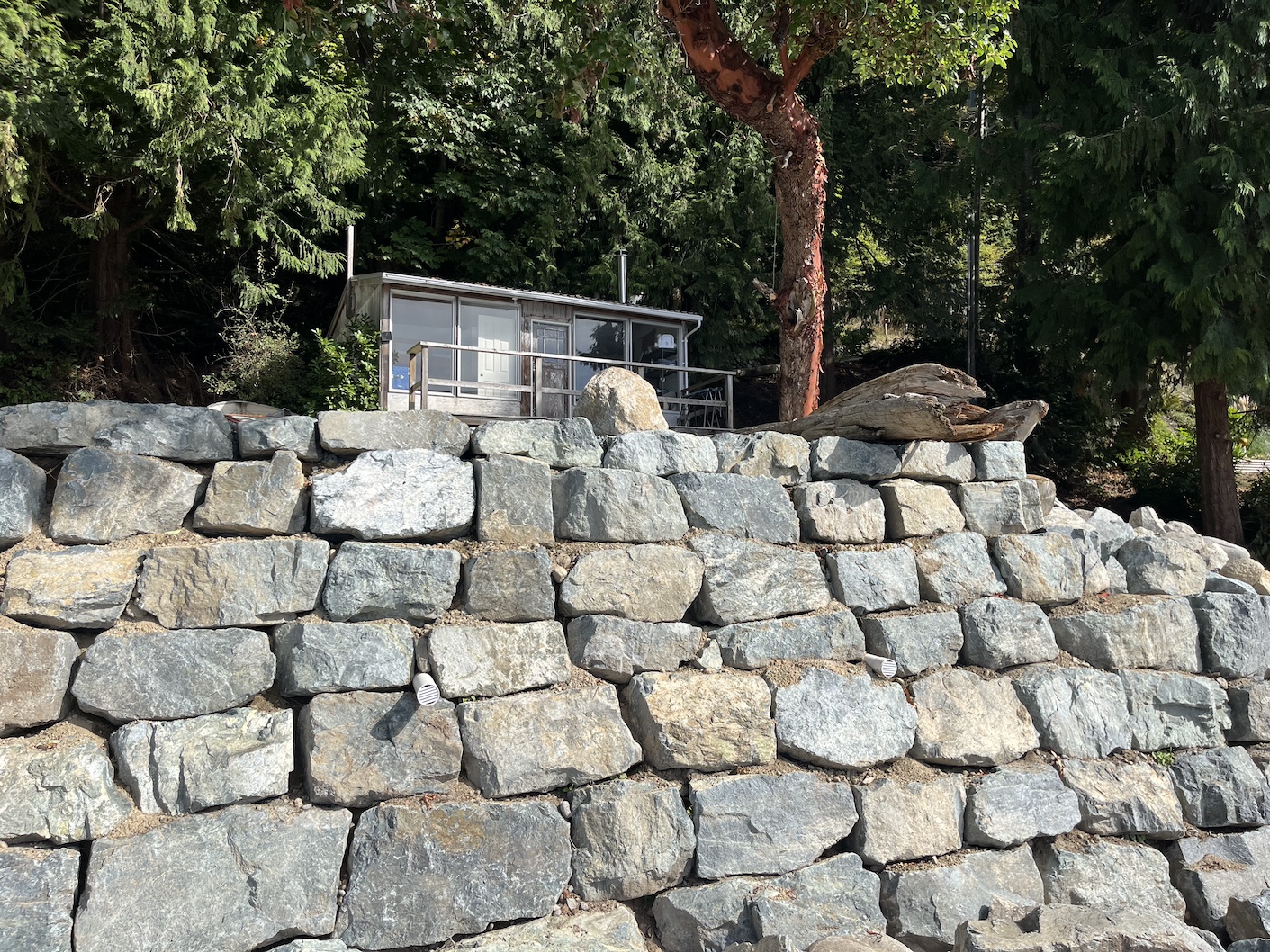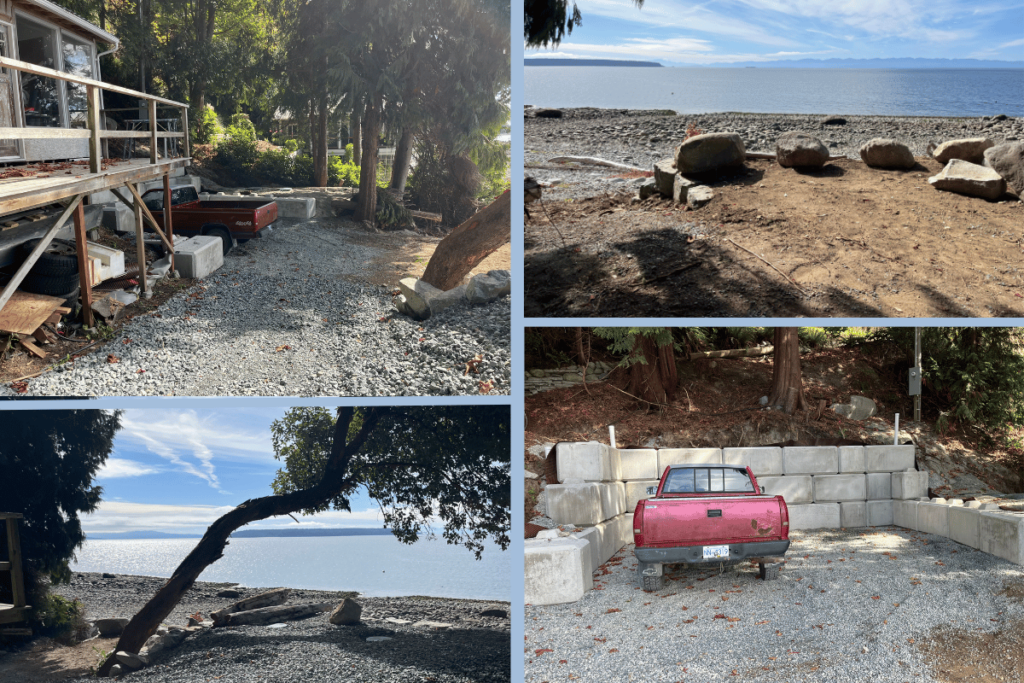The Merits of Using Retaining Walls for Septic Systems: A Case Study on Waterfront Property in Powell River

Waterfront properties are highly sought after, providing stunning views and serene surroundings. However, when it comes to property development, they also present unique challenges, especially when expanding existing structures or installing necessary systems like septic systems. One such project in Powell River, on Atrevida Road, demonstrated how innovative solutions, such as retaining walls, can help overcome these challenges while ensuring the functionality and aesthetic appeal of the property. There are many reasons to use retaining walls for septic systems.
The challenge: Limited space and environmental sensitivity
Our Powell River customer, purchased a small cabin on a picturesque waterfront property, but wanted to expand the cabin and install a high-end septic system. Waterfront properties often have spatial constraints, especially when adhering to environmental regulations aimed at protecting water quality. The septic system, therefore, needed to be carefully designed and installed in a way that was both efficient and non-intrusive to the natural surroundings.
To complicate matters further, the proximity to the water made it impossible to fully bury the septic tanks without additional support. Additionally, the customer desired a parking area where the tanks would be placed, adding another layer of complexity to the project.
The solution: Utilizing concrete septic tanks and retaining walls
Given the limited space and environmental considerations, the decision was made to install concrete septic tanks that could double as a support structure for a parking area. Concrete septic tanks are durable, long-lasting, and capable of withstanding the weight of vehicles, making them ideal for this dual-purpose role. However, because the tanks could not be fully buried due to the waterfront location, a creative solution was needed to integrate the tanks into the landscape.
The answer came in the form of a rock retaining wall built along the beachfront. Retaining walls offer several key advantages in this context:
Stabilization and support: The rock wall provided the necessary support to partially bury the septic tanks, stabilizing the soil and preventing erosion. This was crucial for ensuring the longevity and safety of the septic system.
Space optimization: By constructing the retaining wall, we were able to maximize the available space on the property. The tanks were securely placed behind the wall, while the area above them was transformed into a functional parking space.
Aesthetic integration: The natural rock design of the retaining wall blended seamlessly with the waterfront environment, preserving the visual appeal of the property. Instead of an eyesore, the septic system became an integrated part of the landscape.
Collaboration for success
This project was a collaboration between several local companies, each bringing their expertise to the table. Mini Monster Excavating handled the equipment and labor, while Rural Septic supplied and installed the high-end septic system. T&R Trucking provided the necessary materials, including Hyland Precast Inc. lock blocks, which were used to create a foundation for the cabin’s future addition.
The use of lock blocks added another layer of structural integrity, ensuring that the expanded cabin would have a solid foundation in place. This allowed the customer to focus on completing the addition next summer, knowing that the groundwork had already been laid.
The merits of retaining walls for septic systems
This project highlights the many benefits of using retaining walls in conjunction with septic system installations, particularly on challenging sites like waterfront properties:
Erosion Control:
Retaining walls help prevent soil erosion, a common issue near bodies of water, which can otherwise compromise the stability of both the septic system and the property itself.
Space Maximization:Retaining walls allow for more efficient use of limited space by creating additional functional areas, such as parking or garden spaces, above or near septic tanks.
Structural Support: Retaining walls provide necessary support for partially buried systems, ensuring that the tanks remain stable even in challenging conditions. For a more robust retaining wall solution, T&R also is a distributor of Redi-Rock® engineered retaining wall systems.
Aesthetic Appeal: With thoughtful design, retaining walls can enhance the visual appeal of a property, blending into the natural environment rather than detracting from it.
Looking ahead
Thanks to careful planning and execution, the project was completed successfully, on time, and within budget. As the customer moves forward with their plans to expand the cabin and complete the landscaping, the retaining wall and septic system will continue to play a crucial role in the overall development of this beautiful waterfront property in Powell River. With careful planning, the use of retaining walls not only solved immediate challenges but also set the stage for future growth and enjoyment of the property.
At T&R, we are proud to have been part of this successful collaboration, and we look forward to continuing our work on the property as it evolves.




